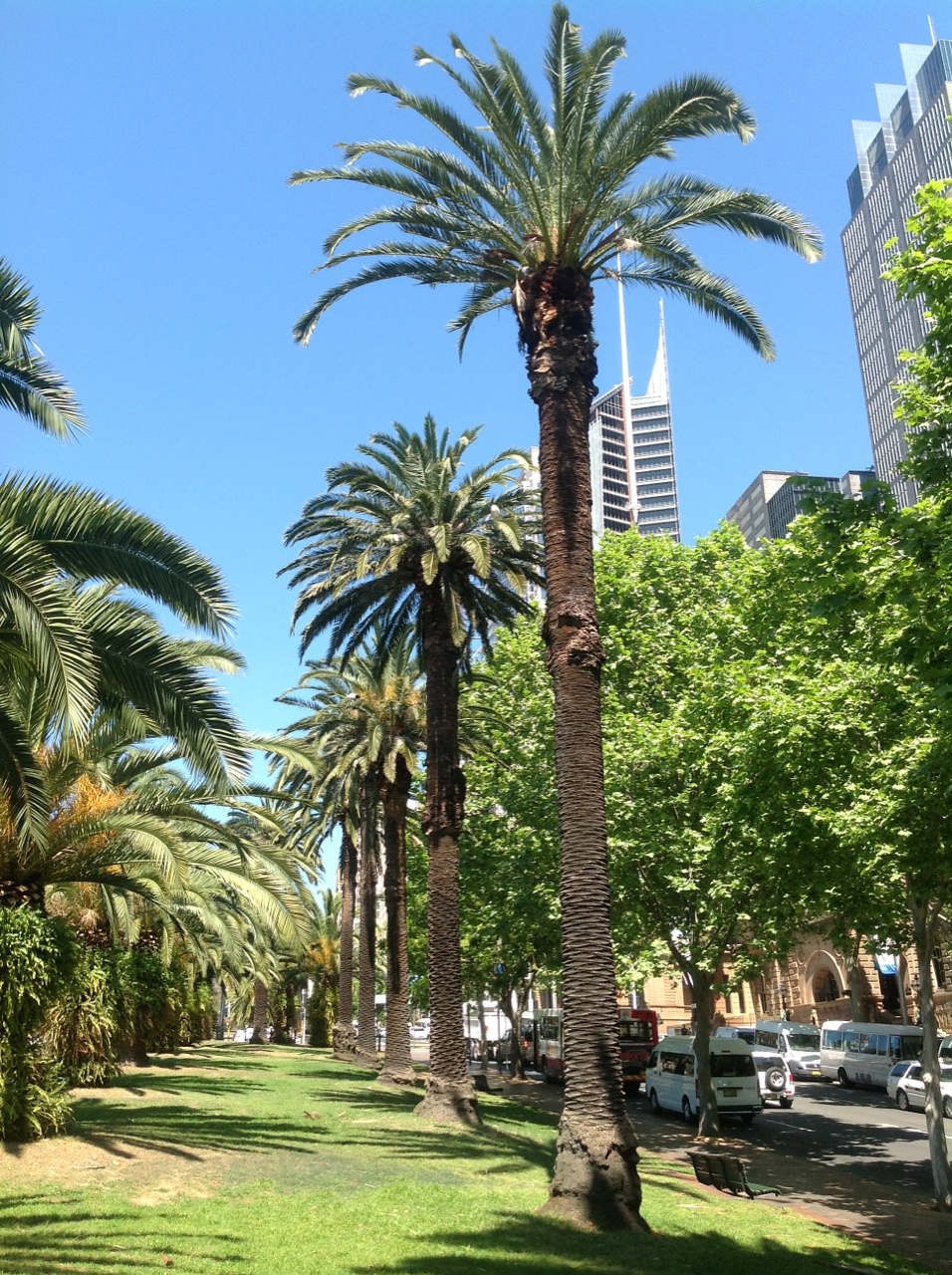Description
This exotic palm species was highly favoured in formal planting schemes. Canary Island Date Palms have a dramatic presence and bold, robust scale, a relatively uniform growth pattern and tolerance to drought.
Out of the 91 palms present only approximately 36 are likely to date to the original 1915 plantings. The remaining are supplementary planting to create a double mixed age row and to extend the avenue along the Tarpian Way to the north above Macqaurie Street, and to line the Cahill Express way on ramps completed in the 1960’s.
Significance
This formal row of Canary Island Date Palms (Phoenix canariensis) planted by J H Maiden, Director, Sydney Royal Botanic Gardens in 1914-15, is one of the City’s most important formal streetscapes (State Heritage Inventory). These palms are scheduled in the City of Sydney Local Environmental Plan 2012.
They remain one of the best avenues of trees in the Sydney central business district. This planting influenced the extensive use of Canary Island palms throughout Sydney. The influence can be seen in the plantings of Moore Park and Centennial Park. They have historical significance as an indicator of the period of the widening of Macquarie Street, and the influence of the Sydney Botanic Gardens Director J. H. Maiden on the civic plantings of the early 20th century and aesthetic significance as a grand avenue of palms.
Significant public collections of this species around Sydney have been decimated in recent years by introduced fungal pathogens in the soil. The elimination of these iconic landscapes has been swift. Centennial Park has been particularly affected by this problem. With growing concern over the status of these palms, a second parallel row of Canary Island Date Palms was added during the 1980’s. These have also been included in the listing.
Historical notes
The avenue planting of Canary Island Date Palms (Phoenix canariensis) in Macquarie Street commenced near the Mitchell Library in 1911 and proceeded in a northerly direction as the road was widened. Planting was completed in 1915.
The species was used extensively throughout the latter part of the nineteenth century and early twentieth century, particularly during the Inter-War period (c.1915-1940). The palm is often associated with commemorative planting and civic landscapes with many formal avenues planted after the First World War (eg. More Park, Centennial Park and Redfern Park).






